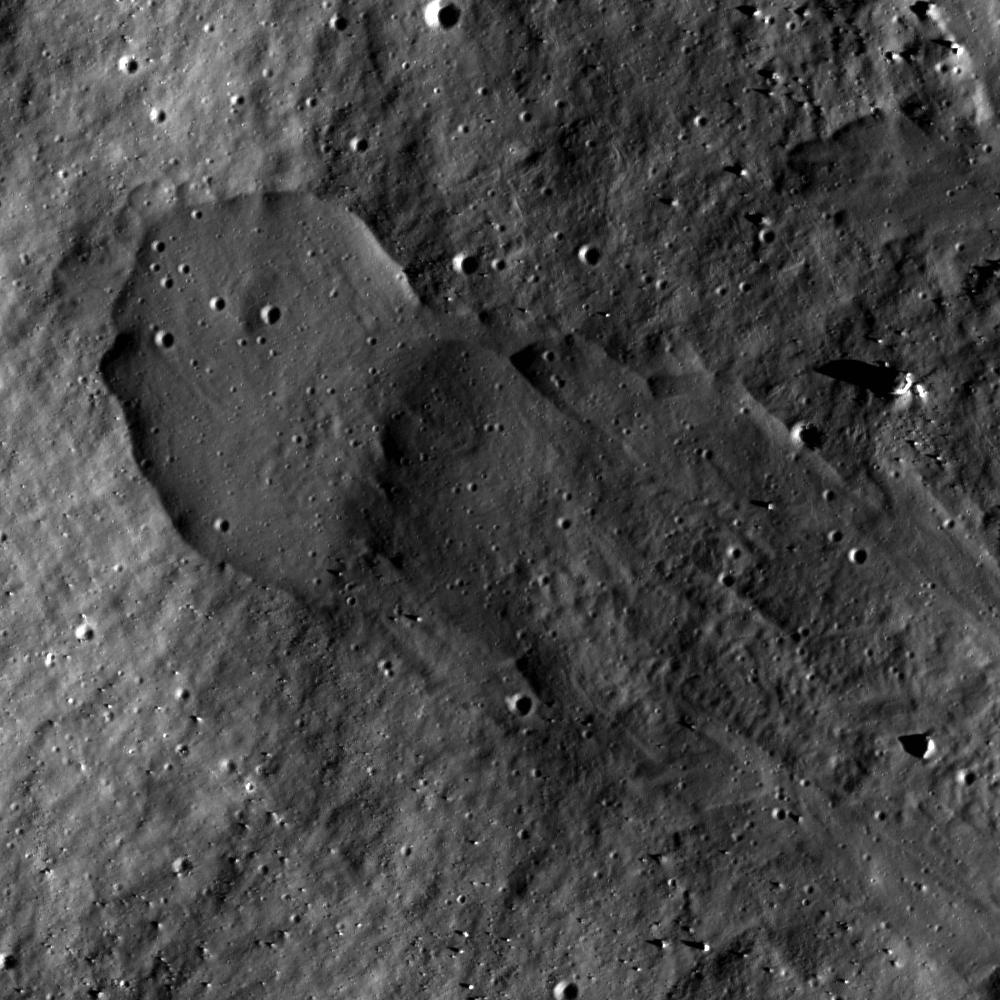
Giordano Bruno crater (located at 35.9°N, 102.8°E) is a Copernican impact crater known for its interesting impact melt features. The crater is named after the famous Italian philosopher Giordano Bruno who lived during the Renaissance. Today's Featured Image shows an impact melt flow outside of the crater walls. Ejecta, including impact melt, was thrown from Giordano Bruno and came to rest about 6 km away from the rim. Some of the material continued to travel across the surface and formed spectacular flow forms that resemble lava flows. The direction of flow is toward the top of the frame, away from the rim of Giordano Bruno. Although formed by a different process, impact melts flow in much the same way as lava flows, forming lobes and exhibiting channels and levees. Like lava flows, they cease to move when their source is depleted or the melt cools and freezes into solid rock. But can we be sure these flows were formed from impact melt? Perhaps fluidized granular flow can mimic lava flows?
Giordano Bruno is one of the youngest large craters (22 km diameter) on the Moon. How old is "youngest"? Most of the time, geologists classify the youngest craters into a group called Copernican-aged craters. However, if humans went back to the Moon they could sample some of the flows outside of Giordano Bruno, bring the sample back to Earth, and then use radiometric age dating to estimate the age of the rock. Scientists could also determine if these spectacular flows were formed from impact melt or fluidized ejecta. Either way there would be pieces of cooled impact melt that can be used to measure the age of an impact since the rock's "isotopic clock" is reset when it returns to a molten state.
Explore the entire NAC frame for more impact melt flows outside of Giordano Bruno!
Related Images:
Impact Melt Flows on Giordano Bruno
Delicate Patterns in Giordano Bruno ejecta
Published by Sarah Braden on 25 August 2011
